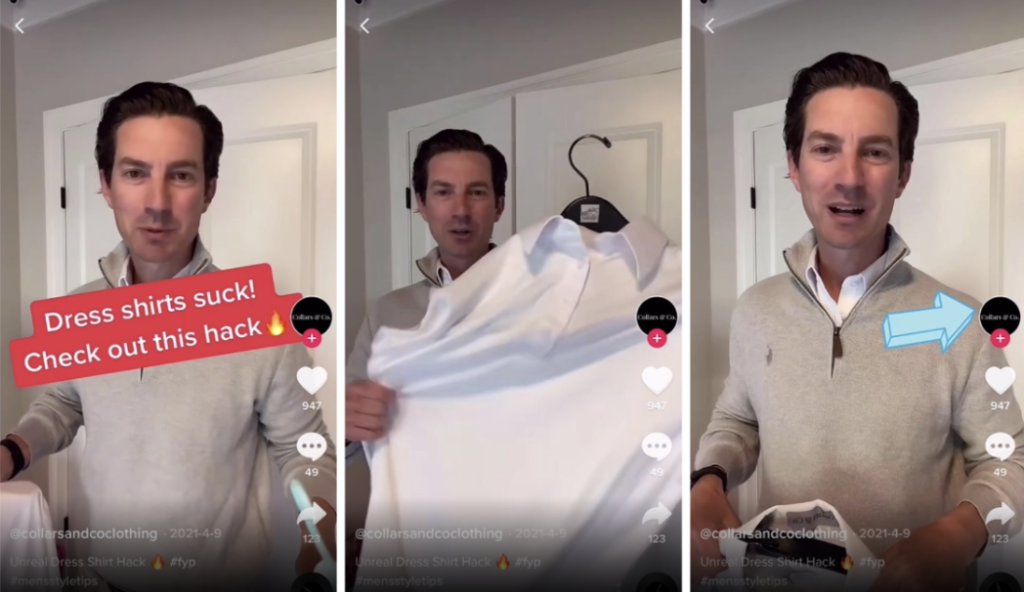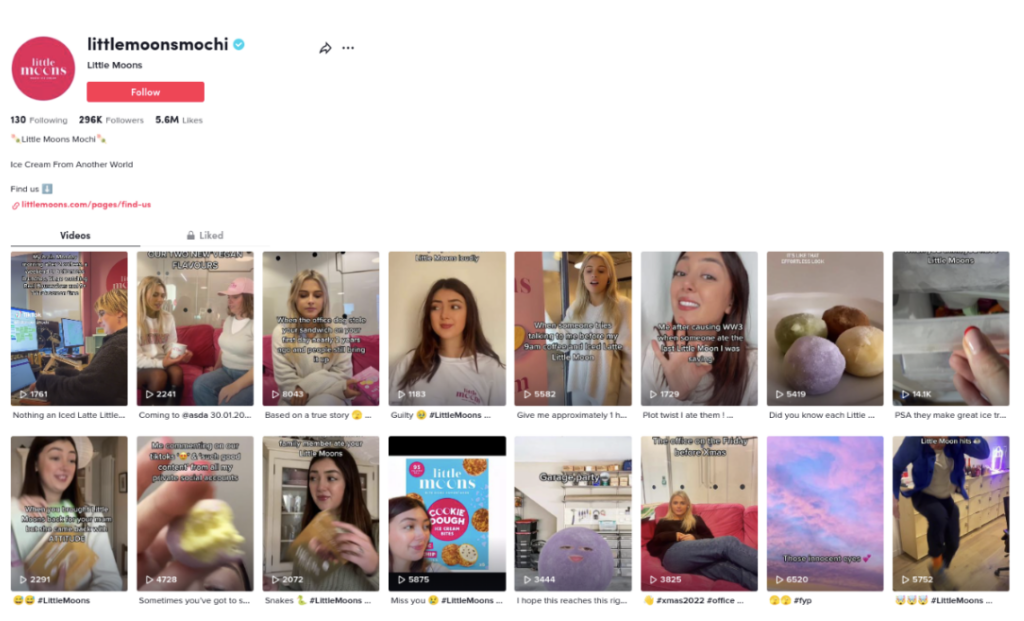How to Create a Successful TikTok Marketing Strategy

Despite being a relatively new player in the social media space, TikTok has already established itself as an absolute powerhouse.
The platform is insanely influential, leading the way when it comes to viral trends and attracting a colossal audience of actively engaged users.
Unsurprisingly, this also means that brands around the globe are frantically scrambling to capitalise on TikTok marketing opportunities.
But in the race to stamp their mark on the TikTok app, many of these advertisers are overlooking the importance of a solid marketing strategy.
The result? Rushed campaigns, mediocre content, and underwhelming results.
If you want to maximise the full potential of TikTok marketing, then you’ll need an expertly planned, data-driven strategy that allows you to connect with your target audience and leave your competitors scratching their heads.
Is TikTok marketing effective?
TikTok marketing can be incredibly effective for brands, allowing them to reach a huge audience of younger users, produce creative content, and launch data-fuelled ad campaigns. However, if you want to drive optimal results on TikTok, then you’ll need a solid marketing strategy.
A clear and actionable TikTok advertising strategy provides you with a strong foundation for everything you do on the platform.
Your TikTok strategy will help you to establish who you’re looking to reach and how you can communicate with them. It will help you measure the impact of your marketing, create content that resonates with your audience, and differentiate yourself from the competition.
If you’re trying to freestyle TikTok marketing without a clear strategy in place, you might as well run your campaigns blindfolded.
But where should you start with your strategic planning? And what are the most important areas to focus on when you’re preparing to launch a new TikTok marketing campaign?
Let’s run through the 7 key steps to a wildly successful TikTok marketing strategy.

7 key steps to an effective TikTok marketing strategy
Building a TikTok marketing strategy from scratch can feel a little intimidating at first - but if you follow these 7 steps, you’ll be equipped with all the insights you need to blow your objectives out of the water.
Step #1 - Collect high-value UGC
User Generated Content is extremely powerful on social media, and this is particularly true on the TikTok platform.
UGC provides your brand with content that feels human and authentic. This helps you to generate instant credibility and authority with your target audience, which can build trust and ultimately lead to conversions.
One study even found that UGC on TikTok outperformed traditional ads in several core areas, including attention, interest, and emotional engagement.
Always ensure that you’re carving out a space for UGC in your TikTok marketing plans.
There are several ways to gather UGC on TikTok, including:
- Searching for hashtags that are connected to your brand
- Encouraging your audience to upload content (i.e. competitions, rewards)
- Partnering with ‘UGC creators’ to produce assets
If you’re smart, you can even set up a never-ending cycle of UGC production on TikTok by constantly harvesting, promoting, and incentivizing fresh content.

Step #2 - Learn the platform inside-out ½
Familiarising yourself with the TikTok platform is a must before you start planning and executing marketing campaigns.
Take some time to scroll through the TikTok feed to understand what types of videos are resonating with audiences, and how users interact with branded content.
How are the most popular brands communicating with viewers? Which types of videos are engaging your target customers? Where are the biggest opportunities for your brand?
Applying a few TikTok best practices will also have a major impact on your performance.
For example, videos that include closed captioning (or text that displays a CTA) deliver a 55.7% lift in impressions compared to videos that don’t. Video duration is also massively important - 1 in 4 top-performing TikTok videos run between 21 and 34 seconds.
Understanding what makes trending TikTok videos successful will pay dividends when it’s time to produce your own assets. If you’re keen to unlock expert insights about TikTok advertising, then partnering with a specialist marketing agency can be a wise move.
Step #3 - Focus on your target audience
Establishing your target audience is a hugely important part of your TikTok strategy.
Once you’ve identified the users you’d like to reach, you can begin to gather insights about them, tailor content based on their interests, and target them with paid ads.
There are several ways that you can build a clearer picture of your target audience on TikTok. For instance, you might:
- Deep dive your existing customer data for demographic information
- Apply audience learnings you’ve gathered on other social platforms
- Analyse competitors to identify who they’re targeting on TikTok
- Explore relevant topics and hashtags to understand audience interests
Once you’ve launched your marketing efforts, you should also frequently check TikTok analytics to understand which audiences are engaging with your content.
You might discover user segments that you hadn’t even considered targeting previously, which can open up new opportunities for content strategies and conversions!

Step #4 - Learn from competitor successes (and failures)
While your competitors may be working hard to capture the attention of your target audience, they can also provide you with a lot of useful performance insights.
When you’re pulling together your TikTok marketing strategy, write up a list of relevant competitors in your industry. You can also use TikTok analytics tools to keep track of them.
(If you’re a small business, try to balance established corporations with brands that are of a similar size.)
Once you’ve identified a few of your most important competitors, follow their activity on TikTok to gather as many learnings as possible. If they post a successful piece of content, analyse why it’s resonating with viewers - have they utilised a new format, or experimented with a different creative message?
Keeping tabs on the competition is also a great way to discover new opportunities for your brand.
Monitoring other brands in your market will help you to differentiate yourself and avoid duplicating similar content. You might even spot a gap in the market that you can fill with a new product or feature, helping you to stay ahead of the pack.
Step #5 - Stick to a set posting schedule
It’s easy to obsess over the quality of your TikTok uploads, but you should also place an equally strong emphasis on the consistency of your posts.
Maintaining an active TikTok profile is vital to feeding the TikTok algorithm.
The more you upload quality videos and interact with other profiles, the more engagement you’ll generate, which signals to the TikTok machine that your content is worthy of promoting.
To help you stay consistent, draw up a content schedule that dictates how frequently you’ll post on TikTok. Plan out a few different content ideas, and make sure that you’re producing enough videos to keep your profile lively.
Creating a viral post with a flash of inspiration is great, but steadily building your TikTok presence and growing an organic following will pay off massively in the long run.

Step #6 - Measure your results
Crafting an intelligent TikTok strategy isn’t much good if you don’t know how it’s performing, so make sure that you’re constantly measuring performance on the app.
By monitoring and analysing your marketing results, you can:
- Identify (and expand) your best-performing content strategies
- Understand who your most valuable audiences are
- Utilise performance data to optimise ad campaigns
- Quantify the impact TikTok is having on your business/revenue
You can also leverage multiple platforms to stay on top of your performance data and track different metrics.
To enhance your analysis and gain more precise insights into your campaign's effectiveness, use a TikTok engagement rate calculator alongside TikTok’s built-in measurement tools. They are great for collecting basic performance data, enabling you to track the engagements, views, clicks and conversions generated from your marketing.
Step #7 - Test, test, test your ad campaigns
The best performing TikTok strategies are those that evolve and optimise over time.
To make sure that you’re consistently improving marketing performance, focus on setting up regular A/B tests that enhance your campaigns.
The more you test and experiment with different TikTok tactics, the faster you’ll boost advertising returns and reduce inefficient spend.
There are plenty of marketing variables that you can test on TikTok, such as:
- Target audiences
- Ad formats
- Creative assets
- CTAs
- Ad text
- Bidding strategies
And to make life even easier, TikTok allows marketers to set up automated split tests quickly and easily. All you need to do is select your desired test variable, confirm your primary KPI, and launch your test ad.
By following these steps, you’ll be able to create a potent TikTok marketing strategy that resonates with your target audience, strengthens your brand identity, and allows you to capitalise on the mind-blowing potential of the platform.
But remember - don’t take your foot off the pedal once your strategy is complete.
There are always new insights to gather and new learnings to apply, so make sure you’re constantly developing your strategy to deliver the best possible results for your business.
Featured Image by Mourizal Zativa on Unsplash
